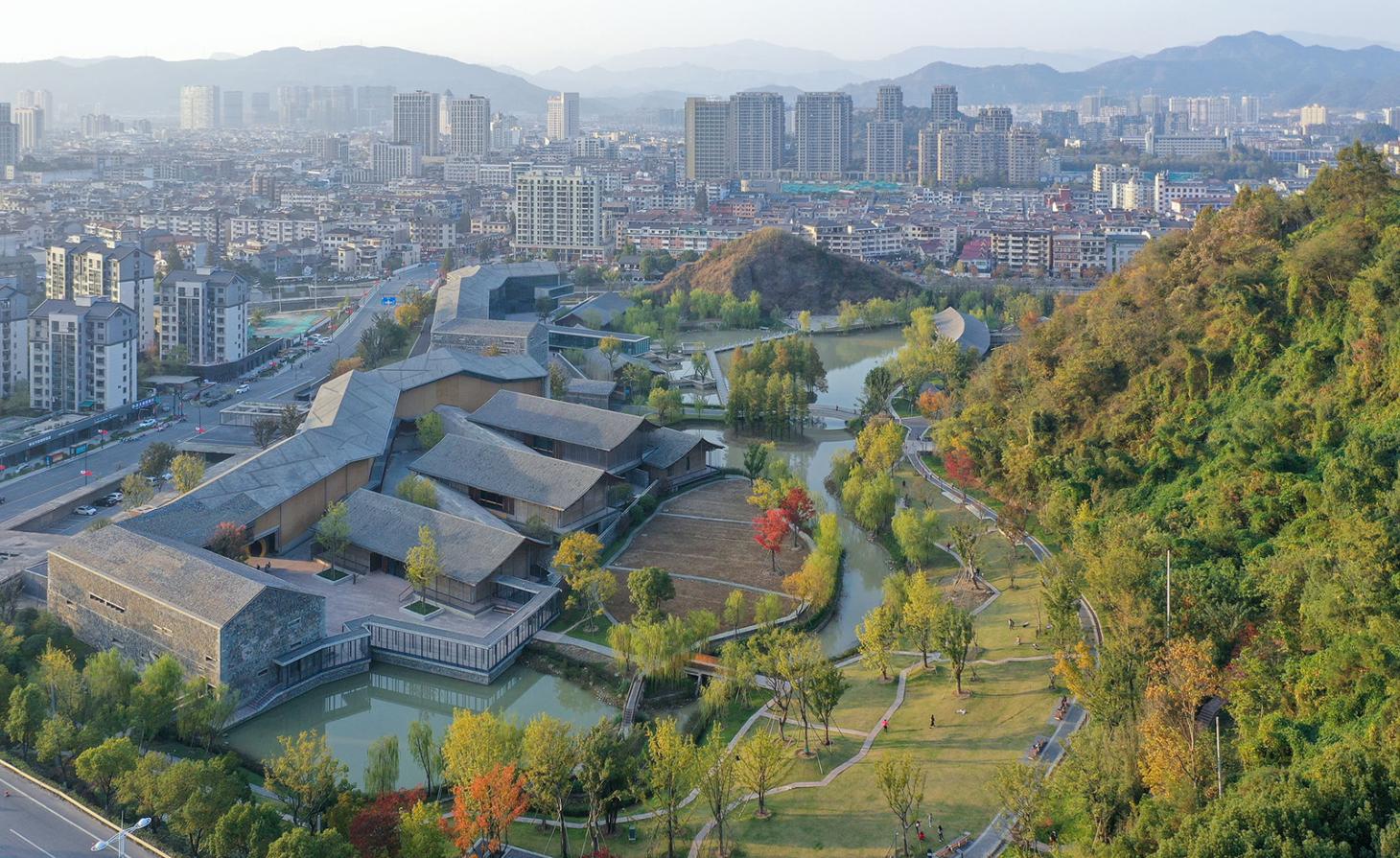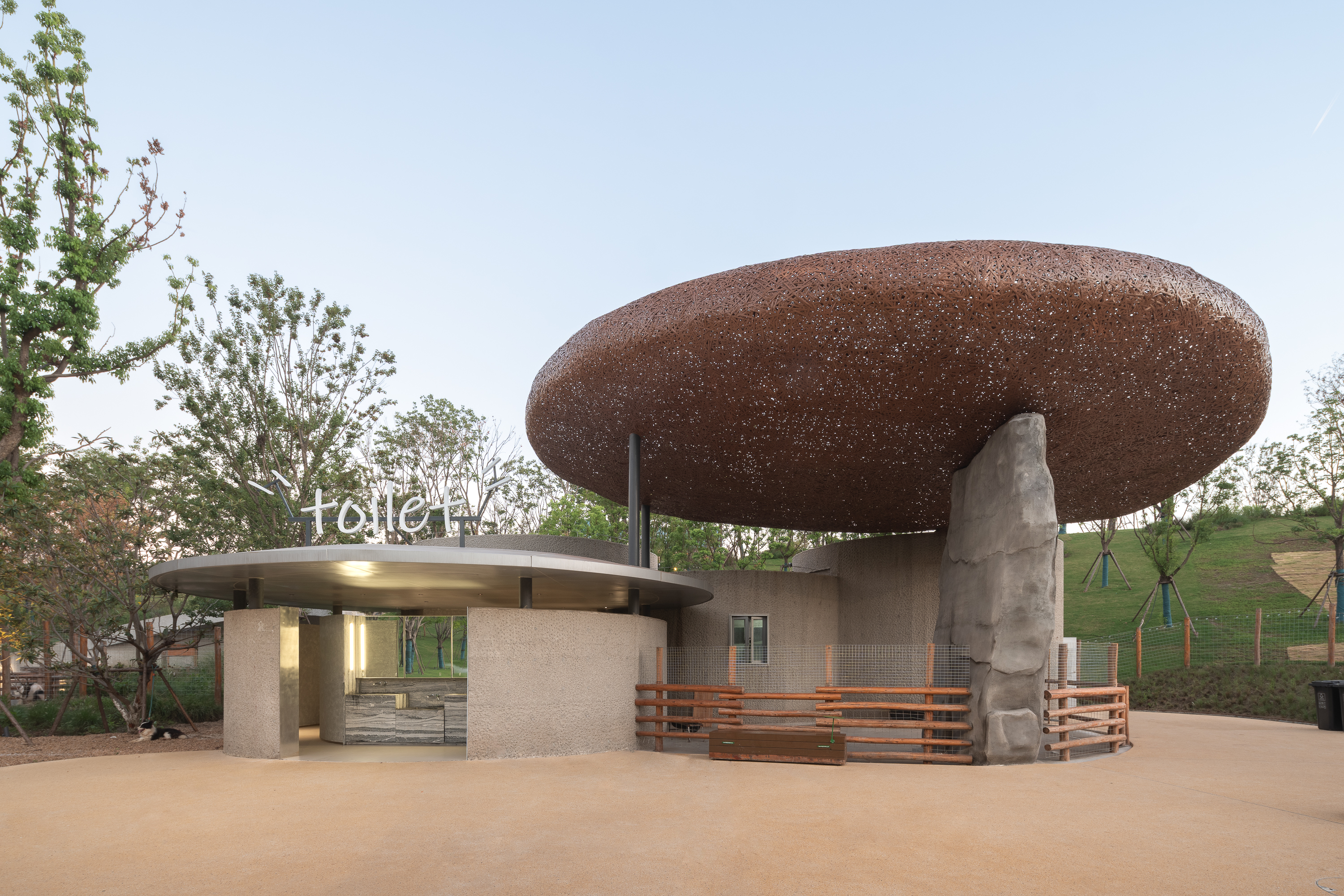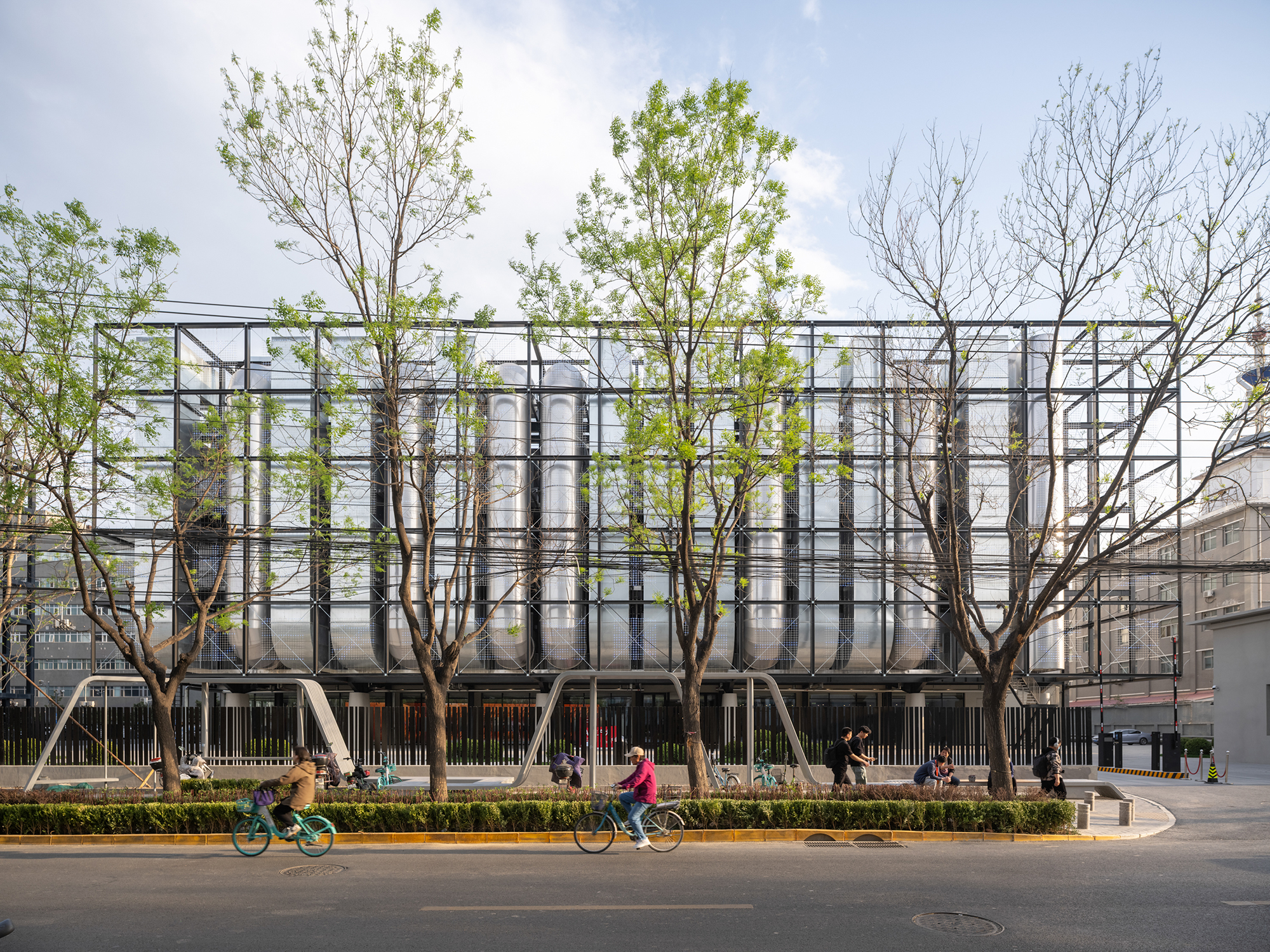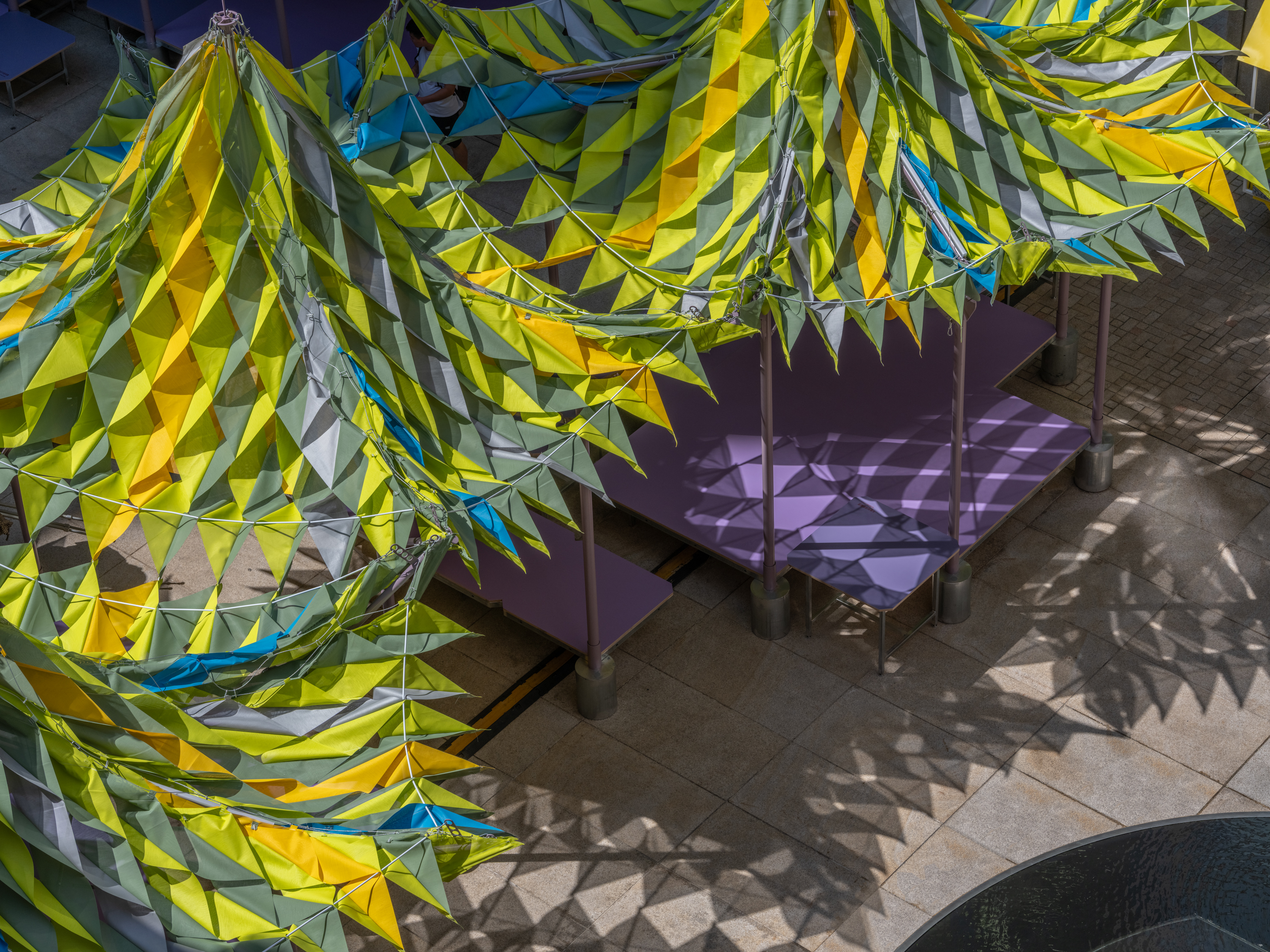Wang Shu’s Lin’an Museum combines tradition and modernity in China
Inspired by Chinese landscape paintings and vernacular architecture, the Lin'an Museum designed by Amateur Architecture Studio uses traditional materials and building techniques to forge a modern museum

Lin’an Museum is the latest project by Amateur Architecture Studio, a practice founded by Pritzker-prize-winning architect Wang Shu and his wife Lu Wenyu. The small town of Lin’an, 60km west of the provincial capital, Hangzhou, commissioned the architects to design a museum to house its collection of ancient artefacts belonging to the Qian family.
The project comprises a commercial block, featuring shops selling local crafts, to the north, and the museum complex to the south. Both wings provide protection from the main road and create a secluded garden, parkland and lake open to the public.
Wang Shu is dean of architecture at the nearby China Academy of Art in Hangzhou and this building is a development of his interest in local craftsmanship and urban memory. Each building is a kaleidoscope of different materials; from those materials traditionally found in the regional residential vernacular: brick, stone, rubble, gravel, mud, wood, and reclaimed tiles; to more contemporary materials like steel, concrete and plaster.

To memorialise the original farming use of this site, the architect’s concept was inspired by the forms of ‘villages, farmlands and modest dwellings’. The massing of the buildings reflects the idea of ‘architecture as mountain’, in juxtaposition to the dramatic Gongchen Mountains to the east and the lake to the south. Wang has created a design reflective of traditional Chinese landscape paintings.
After entering the museum from the south via the main plaza, the visitor is guided through a series of individual museum halls with curved pitch roofs and dramatic eaves structures reflecting a simple residential architectural style. Each new hall, hosting different aspects of the Qian family history, zigzags up the gently sloping site. Occasionally, the route opens onto external bridges and walkways similar to those in Xiangshan Campus in Hangzhou, the building that first brought Wang Shu to the world’s attention.
Lin’an Museum envelopes the site to form a protected space within, and there are a number of deft ancillary structures: teahouses, service centres and toilet blocks that fit into the landscape without distracting from it. As an overall collection, it is a masterclass in appropriate design responses to site. For anyone on a Wang Shu pilgrimage, this building should definitely be on your list.
Receive our daily digest of inspiration, escapism and design stories from around the world direct to your inbox.
-
 Curvilinear futurism meets subtropical beaches at Not A Hotel’s ZHA-designed Okinawa retreat
Curvilinear futurism meets subtropical beaches at Not A Hotel’s ZHA-designed Okinawa retreatZaha Hadid Architects has revealed the design for the first property in Not A Hotel’s futuristic new Vertex collection, coming soon to southern Japan
-
 Gorden Wagener leaves the helm of Mercedes-Benz design after 28 years with the company
Gorden Wagener leaves the helm of Mercedes-Benz design after 28 years with the companyThe German designer is stepping down from the role of chief design officer at Mercedes-Benz. We look back at his influence and impact on the world of automotive and luxury design
-
 These Christmas cards sent by 20th-century architects tell their own stories
These Christmas cards sent by 20th-century architects tell their own storiesHandcrafted holiday greetings reveal the personal side of architecture and design legends such as Charles and Ray Eames, Frank Lloyd Wright and Ludwig Mies van der Rohe
-
 Wang Shu and Lu Wenyu to curate the 2027 Venice Architecture Biennale
Wang Shu and Lu Wenyu to curate the 2027 Venice Architecture BiennaleChinese architects Wang Shu and Lu Wenyu have been revealed as the curators of the 2027 Venice Architecture Biennale
-
 Tour this Chinese eco-farm, an imaginative wonderland connecting visitors with nature
Tour this Chinese eco-farm, an imaginative wonderland connecting visitors with natureLuxeIsland Farm by Various Associates is an eco-farm and visitor attraction in China’s picturesque Wuhan region; take a stroll across its fantastical landscape
-
 Welcome to The Gingerbread City – a baked metropolis exploring the idea of urban ‘play’
Welcome to The Gingerbread City – a baked metropolis exploring the idea of urban ‘play’The Museum of Architecture’s annual exhibition challenges professionals to construct an imaginary, interactive city entirely out of gingerbread
-
 The Grand Egyptian Museum – a monumental tribute to one of humanity’s most captivating civilisations – is now complete
The Grand Egyptian Museum – a monumental tribute to one of humanity’s most captivating civilisations – is now completeDesigned by Heneghan Peng Architects, the museum stands as an architectural link between past and present on the timeless sands of Giza
-
 Honouring visionary landscape architect Kongjian Yu (1963-2025)
Honouring visionary landscape architect Kongjian Yu (1963-2025)Kongjian Yu, the renowned landscape architect and founder of Turenscape, has died; we honour the multi-award-winning creative’s life and work
-
 A new AI data centre in Beijing is designed to evolve and adapt, just like the technology within
A new AI data centre in Beijing is designed to evolve and adapt, just like the technology withinSpecialised data centre Spark 761, designed by llLab, is conceived as a physical space where humans and AI technology can coexist
-
 Shanghai’s biennial, RAMa 2025, takes architectural exploration outside
Shanghai’s biennial, RAMa 2025, takes architectural exploration outsideRAMa 2025, the architecture biennial at Rockbund Art Museum in Shanghai, launches, taking visitors on a journey through a historic city neighbourhood – and what it needs
-
 Atelier About Architecture’s ‘house within a house, and garden within a garden’
Atelier About Architecture’s ‘house within a house, and garden within a garden’House J in Beijing, by Atelier About Architecture, is an intricate remodelling complete with a hidden indoor garden and surprising sight lines